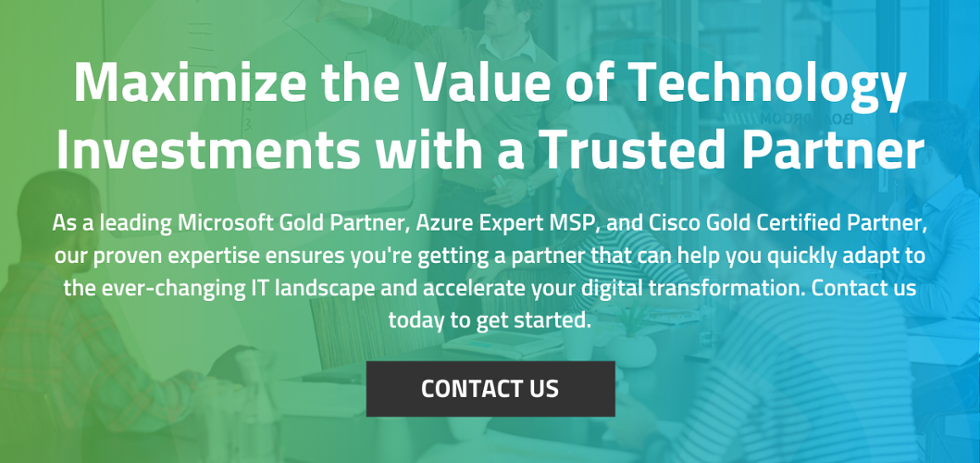If you are familiar with R.E.M., the band that brought alternative rock to the mainstream, you probably know of their 1985 hit song, “Can’t get there from here”. I thought this was a humorous concept: of not being able to get to a destination based on where you start. Then I got into IT and discovered “Can’t get there from here” is a common theme.
Comprehensive Change is Difficult
Comprehensive change to a datacenter is difficult for many reasons. Maintaining a high level of services availability while simultaneously improving the infrastructure to keep pace with technology can be extremely challenging. The expectation is that the datacenter services will always be available and the surrounding infrastructure will silently evolve and improve over time. In many ways it does, but eventually it needs to be built on a new foundation because we can’t get where we want to be without starting from a different point.
Datacenters are not a monolithic technology. Instead, they are a collection of disparate technologies that were manually integrated over time by engineers with various skill levels and priorities. These engineered integrations gradually led to more complexity, slower innovation, slower deployment of new services, and increased costs. Many organizations accumulate this type of technical debt over time, and it makes it more difficult to support and incrementally modernize the datacenter.
So, how do you modernize your datacenter to stay competitive and provide a level of service on par with XaaS alternatives? How do you build a new modern datacenter, in the same footprint, without having a negative impact to the business?
Start With a Vision
Define how the outcome of your datacenter modernization efforts will look and how it will differ from where you are today. Avoid the common pitfall of designing your modernization around vendor specific solutions during these initial steps. You should determine which building materials you need after you know what you are building.
Some helpful questions to ask yourself include:
- What new capabilities will it provide?
- What new efficiencies will be realized?
- How does it improve our cost model?
- Can it provide a similar level of service as our cloud services platform?
- Is it complimentary to our cloud services strategy?
- Will it evolve with the requirements of our organization?
Create a Plan
A structured planning and design phase, guided by project management, is critical. Plan for small failures and have a framework to guide design revisions based on the inevitable discovery of new design constraints. Here are several important items for any datacenter modernization project:
Reverse Engineer the Vision
- Define how your clients will consume services from your modern datacenter
- Draft new SOP framework to envision efficient operational processes
- Define requirements for IT Service Management (ITIL, ISO 20000, etc.)
- Define performance, resource capacity and cost reporting requirements
- Define criteria for success related to solutions and components
- Focus on modularity and scalability so you can start small and scale as needed
- Do not let personal biases for products or vendors color the vision
Architect or Fail
- Appoint a lead architect
- Expertise in architectural development (think TOGAF instead of CCIE)
- Coalesce technical silos into a single cohesive architecture
- Final arbiter for architectural disputes
- Protect your design from “creative” engineering
- A team of engineers who are left to their own devices will rarely engineer solutions in a consistent manner
- Provide clear parameters for the engineering team with an escalation process for situations that cannot be resolved within those guidelines
- Define which tools are in the engineering toolbox and only an architect can add a tool to that box
- Periodically review the original vision to make sure the architecture you are building is tracking with the original intent
Start Early
- If your deadline is less than two years out, you should already be learning from your failures
- Create an effective pilot strategy
- Pilot small and early, don’t wait for perfect design to start your first pilot
- Learn from pilot to improve design
- Transition from pilot to limited production to limit capital investment in legacy environment
Migration Through Attrition When Possible
- Deploy the new services in a new environment as soon as it is production ready
- Shift budget from supporting the legacy environment to grow the new environment
- Use lifecycle management to scale back the legacy environment while scaling up the new environment over months or even years
- Review services for potential retirement instead of migration, you just might find dozens or even hundreds of unused services that were never decommissioned
Get Some Help
Even if you have the best and brightest technical talent in-house, their experience can be limited to those technologies and processes in your environment. This is a great time to get some outside perspective on the “art of the possible” from people with different experiences.
- Bring in consultants or contractors with expertise in datacenter modernization
- Talk to peers who have gone through similar projects
- Leverage resources from vendor partners (Cisco, Microsoft, Dell, VMWare, etc.) when appropriate







Share on